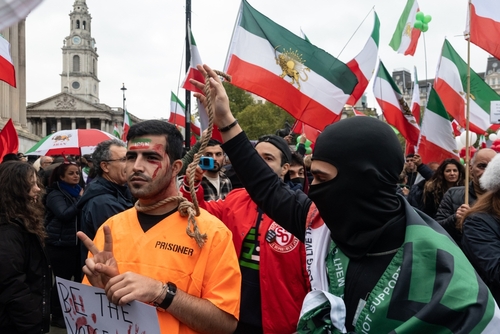Belgium (Brussels Morning Newspaper), In June 1988, when resistance forces at the Iran-Iraq border captured the border town of Mehran, chanting “Today Mehran, tomorrow, Tehran,” while the regime was defeated on almost all war fronts with Iraq (1980-1988), Ayatollah Khomeini, the founder of the Islamic Republic of Iran, felt the cold dew of overthrow on his wrinkled skin. To stand up, he turned to several urgent tasks:
1. Security Council Resolution 598, which had been waiting for Iran’s approval for a year, was hastily adopted to stop the next military operation at the Iranian borders. He immediately proceeded to the long-planned massacre of political prisoners in 1988 across all Iranian prisons. According to a grim fatwa from Khomeini, more than 30,000 political prisoners were massacred over one hellish summer, as stated by a former intelligence official. With the formation of so-called death committees, any prisoner still committed to their beliefs in freedom and justice was sentenced to death in a matter of minutes. Over ninety percent of those executed were Muslims and members of the People’s Mojahedin Organization of Iran. Until then, Khomeini, who had been advocating for war until victory, attempted to mask the war’s defeat and the ceasefire acceptance with this massacre, under the pretext of the “danger posed by these prisoners if released.” The current president of the Iranian regime, Ebrahim Raisi, is reported by Amnesty International to have been directly involved in the massacre.
2. Simultaneously, to create an international crisis and divert global attention from his regime’s fragility and hide this massacre, Khomeini issued a fatwa against Salman Rushdi, the author of “The Satanic Verses,” condemning him to death. Khomeini had never read the book but used it to spark a crisis.
3. After the Iran-Iraq war, many Iranian regime theorists concluded that to survive, the Iranian regime needed to turn to a form of power. They found this power in terrorism, and the atomic bomb, the production of which was then set at the top of the agenda. The Iranian regime has tied the atomic bomb to its survival and will never abandon it until it has succeeded.
4. Meanwhile, Khomeini unified his regime by dismissing his successor, Ayatollah Hossein-Ali Montazeri, who opposed the massacre, to withstand potential threats of overthrow.
The current dictator Khamenei has followed this path with slight modifications according to current conditions:
1. Countless and unjust executions. In 2023 alone, 684 people were officially executed, representing a 30% increase from the previous year. Political executions and execution of women have significantly increased. This is a tactic the Iranian regime intends to use to prevent the next uprising, which will certainly be much more intense than the previous and will likely lead to their overthrow. The striking difference from thirty years ago, is that several thousand resistance units and activists across Iran are ready to turn any spark into a volcano.
2. Who doesn’t know that the winding tunnels of Gaza, sometimes as deep as 60 meters, used also an ammunition and missile factories, etc., could not be the work of Hamas alone. The Iranian dictator has invested in this Sunni fundamentalist group since 2015. It has been able to put this group at his service thanks to huge financial contributions and logistical support. And today, by creating an international crisis, it can continue to divert attention from within Iran and prevent the international community from realizing the fragility of this regime and, more importantly, the existence of resistance units in Iran as a democratic political alternative at their command: so that as a result the West will settle for this regime.
3. Today, the Iranian regime wants to boost the morale of its forces, which are in sharp decline, and on the other hand, show its strength, with operations undertaken by the Houthis in Yemen or militias raised in Iraq and Lebanon and attacking American and Israeli interests, both to hide its fragility and to extract ransom from the West.
4. The 2019 uprising, during which 1,500 young rebels were killed by direct gunfire, sounded the alarm of overthrow for Khamenei, who thus began to consolidate his regime. After the end of President Hassan Rouhani’s term, the religious dictator removed from function much of his so-called reformist regime, which had until then offered much service to Khamenei, and which had always deceived the West into believing that this regime could be reformed from within with simple surgery. And this shrinking of the circle of power continues day by day. Recently, Khamenei disqualified former President Rouhani for the election of the Assembly of Experts, which, by definition, elects the supreme leader. Not only him but also the former Minister of Justice, one of the authors of the massacre, were disqualified.
A year before the fall of the Shah in 1979, Iran was called an island of stability. This regime is rapidly collapsing with unlimited crimes, without a social base, and incompatible with the current civilization of humanity. No policy of appeasement can no longer do anything for it.
Opinions expressed in the op-ed section are solely those of the individual author and do not represent the official stance of our newspaper. We believe in providing a platform for a wide range of voices and perspectives, even those that may challenge or differ from our own. As always, we remain committed to providing our readers with high-quality, fair, and balanced journalism. Thank you for your continued support.Sincerely, The Brussels Morning Team



